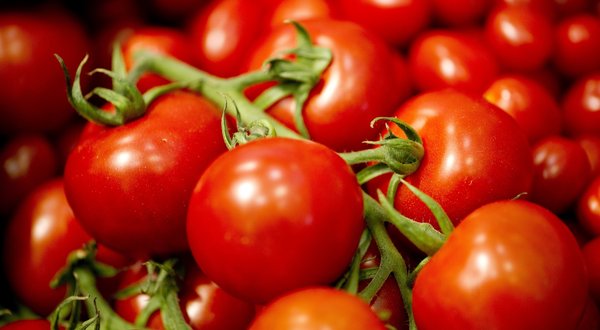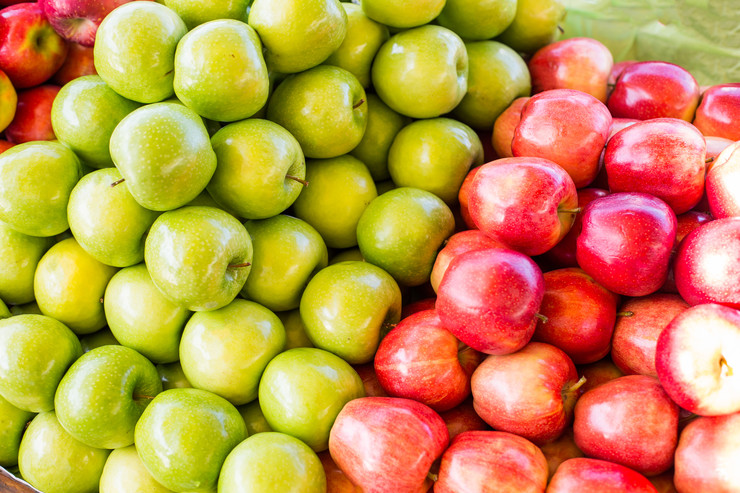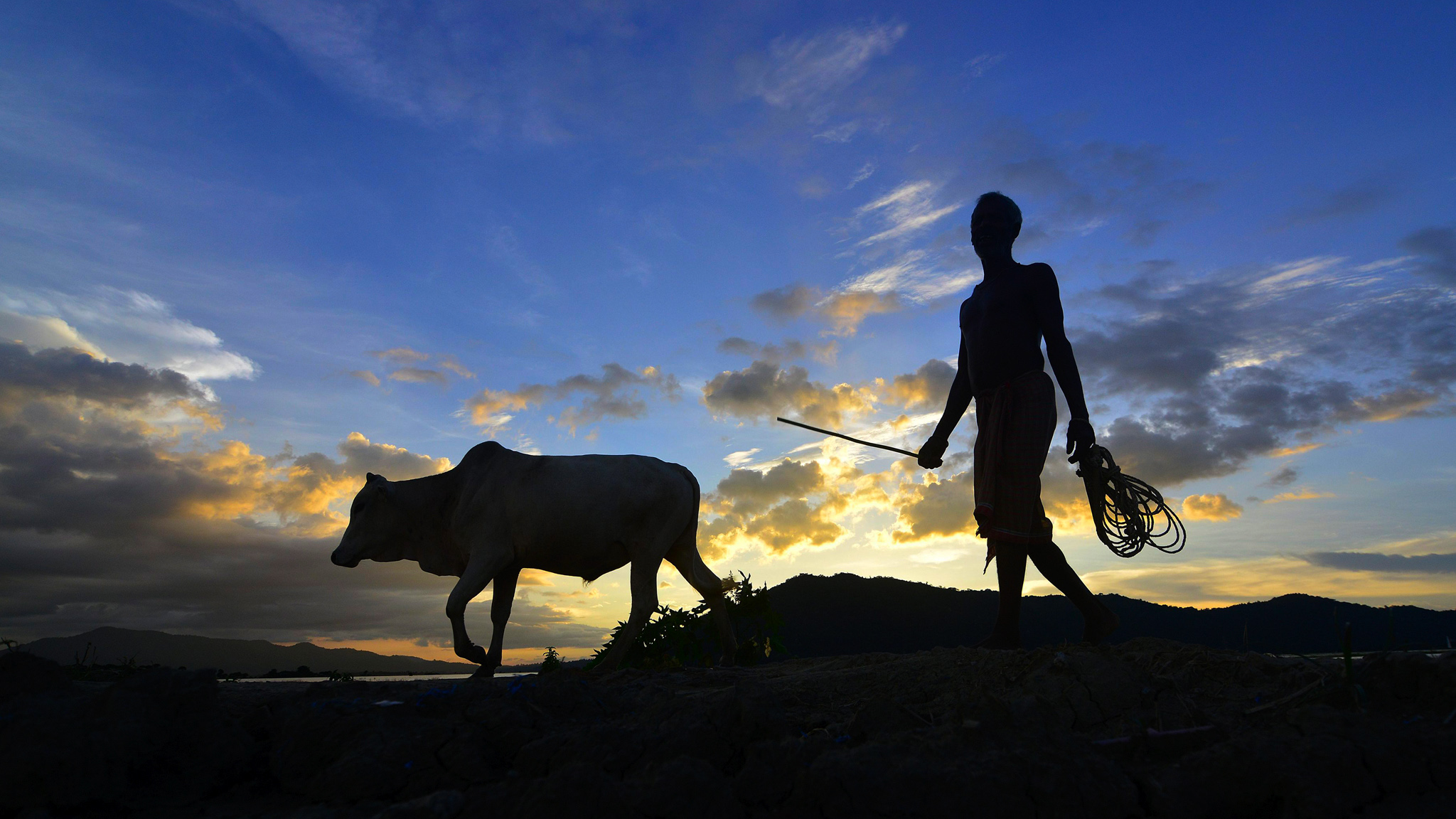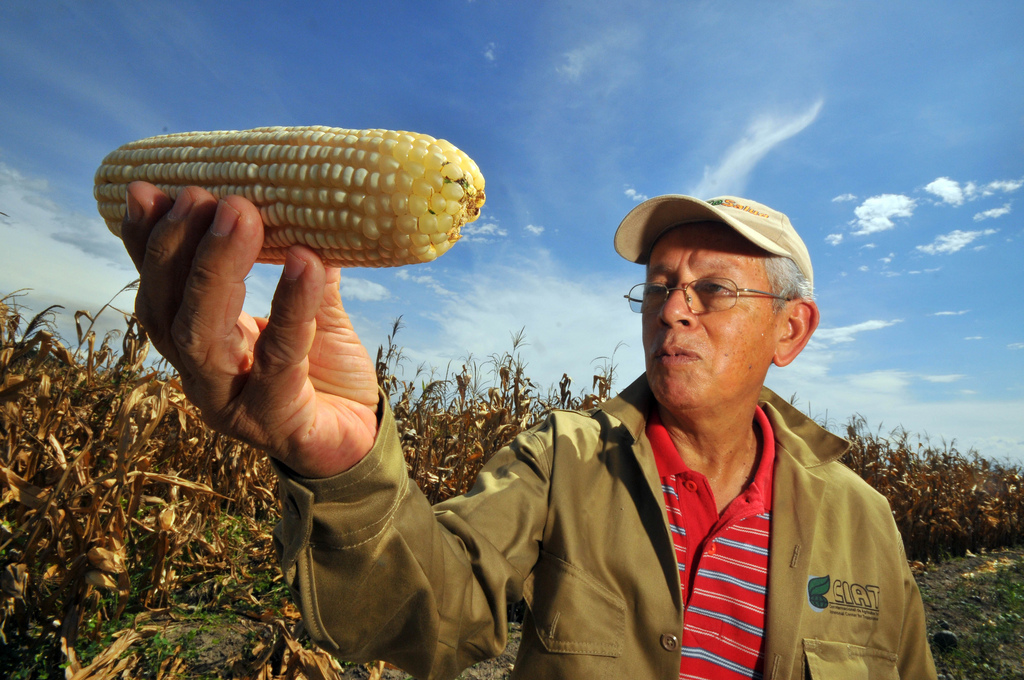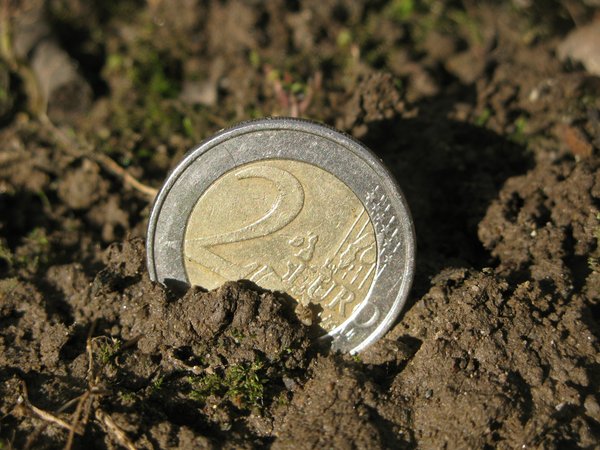Ukraine - Information on Crop Insurance in Spring-Autumn 2011
Download file with graphs >>>
Throughout spring-summer 2011, the insurance companies signed 1,981 crop insurance contracts (750 contracts in 2010). Our database does not distinguish between the types of contracts for spring-autumn as these contracts were less standardised than the contracts providing coverage for the winter season. Normally, the insurers allowed producers to select a limited coverage (i.e. selected perils). This reduces the cost of insurance, especially if the client wishes to insure only against some predetermined risks.
Throughout spring-autumn 2011, 540,000 hectares were insured (340,000 in 2010). The total sum insured was nearly UAH 3.2 b. (UAH 1.6 b. in 2010). The total premiums amounted to UAH 108 million (UAH 57.7 million in 210). The average premium rate was 3.38%, i.e. somewhat lower than in 2010 (3.59%).
The forward grain purchase programme of the KhlibInvestBud Company in the grain market was the major factor contributing to the development of agri-insurance. All producers participating in the programme had to insure the yield with one of the three accredited companies (ASKA, Brokbuisness or Providna). Consequently, these three companies collected over 47% of all premiums in the market in spring-autumn 2011 and insured 264,000 hectares, e.g. 49% of the total acreage insured in the 2011 season. The average insurance rates of these companies were at the level of the market average rate. That may be seen as an indicator that KhlibInvestBud required the producers to have real insurance coverage (which is often not the case when crops are insured as collateral). According to the insurance companies, the average premium rate on bank pledged crops insured in spring-autumn 2011 was only 1.29%.
The insurance companies could not provide the indemnity data for the time when the data was requested, i.e. the database does not include the indemnity and loss data. These data will be collected at later stages along with the data on winter crops insured during autumn 2012.
Crop data
The producers preferred to insure winter wheat (1,091 contracts), sugar beets (234 contracts), corn (192 contracts) and winter rye (122 contracts). Fruit trees and grapes were not covered at all. It should be noted that horticulture insurance is virtually nonexistent in Ukraine. In spring 2011, very few producers purchased vegetable coverage at the rates significantly lower than the average agri-insurance rates in Ukraine.
The insured acreage under winter wheat was 284,000 hectares. The producers paid over UAH 44 million under the contracts insuring winter wheat for the summer season. The corn insurance contracts covered some 69,500 hectares and provided for the premiums worth UAH 19.3 million Sugar beets were insured on 55,800 hectares and the producers collected UAH 26.8 million of premiums. The insured acreage under sunflowers was 40,000 hectares (only UAH 4.7 million collected).
The key agri-insurance data are given in the table below.
Table: Crop insurance data by crop
Crop
Contracts
Including, collateral agreements
Acreage, hectares
Insured sum, UAH
Premiums, UAH
Winter wheat
1,091
42
284,156
1,431,197,640
44,356,435
Winter barley
39
9
9,136
21,520,785
348,608
Winter rye
122
1
13,317
38,726,205
1,430,316
Winter triticale
2
2
380
1,368,360
13,478
Winter rapeseed
31
15
12,060
65,866,904
1,011,434
Wheat
6
0
1,890
9,335,331
154,280
Barley
88
1
21,078
64,027,285
3,359,356
Rye
1
0
9,854
30,765,013
1,155,223
Sugar beets
234
3
55,845
735,329,840
26,803,363
Sunflower
98
5
40,137
161,813,125
4,749,494
Rapeseed
2
0
254
1,168,146
165,877
Bea
1
0
32
70,144
905
Soya
54
1
19,615
84,895,368
3,928,492
Vegetables
1
0
11
512,050
8,193
Corn
192
4
69,490
495,640,697
19,339,792
Spring mustard
2
0
627
526,879
23,595
Tomatoes
1
0
663
18,332,454
696,633
Chick pea
2
0
22
125,104
2,551
Buck wheat
13
0
1,140
31,855,050
318,124
Rice
1
0
352
6,588,000
197,640
Total
1,981
83
540,057
3,199,664,378
108,063,789
The average premium rate for winter wheat was 3.1%. Sugar beets were insured at 3.65%, corn – at 3.9% and sunflowers – at 2.94%. The rapeseed insurance was most expensive – the average rate for two contracts was 14.2%, however it is hardly indicative due to the low number of contacts. In spring 2011, the tomato insurance was most expensive (UAH 1,051 per hectare). It was expensive to insure rapeseed (UAH 653/hectare), rice (UAH 561/hectare) and sugar beets (UAH 480/hectare). Other key features per crop are given in the table below.
Table: Average premium rates, average insured sums, indemnities and average rates per crop
Crop
Average premium rate
Acreage hectares per contracts
Premium total, UAH per contract
Premium sum,
UAH per hectare
Insured sum per hectare
Winter wheat
3.10%
260
40,657
156
5,037
Winter barley
1.62%
234
8,939
38
2,356
Winter rye
3.69%
109
11,724
107
2,908
Winter triticale
0.99%
190
6,739
35
3,600
Winter rapeseed
1.54%
389
32,627
84
5,462
Wheat
1.65%
315
25,713
82
4,939
Barley
5.25%
240
38,174
159
3,038
Rye
3.75%
9,854
1,155,223
117
3,122
Sugar beets
3.65%
239
114,544
480
13,167
Sunflower
2.94%
410
48,464
118
4,032
Rapeseed
14.20%
127
82,938
653
4,599
Bea
1.29%
32
905
28
2,192
Soya
4.63%
363
72,750
200
4,328
Vegetables
1.60%
11
8,193
745
46,550
Corn
3.90%
362
100,728
278
7,133
Spring mustard
4.48%
314
11,798
38
840
Tomatoes
3.80%
663
696,633
1051
27,660
Chick pea
2.04%
11
1,276
116
5,687
Buck wheat
1.00%
88
24,471
279
27,952
Rice
3.00%
352
197,640
561
18,716
Average
3.38%
273
54,550
200
5,925
Data by region
The oblast of Poltava was the leader by the number of contracts sold in spring-autumn 2011. Three hundred eighty two contracts were signed in Poltava oblast. The insured acreage was 96,000 hectares. The total premium amounted to UAH 34 million or 32% of the total agri-insurance premiums in Ukraine. In these oblasts the producers of sugar beets, sunflowers and corn were most likely to insure.
By number of contracts, the leaders are the oblasts of Khmel’nytsk (158 contracts), Vinnytsya (146 contracts), Odessa (103 contracts), and Zhytomyr (102 contracts). In all other oblasts the number of contracts per oblast never exceeded 100.
In addition to Poltava oblast, the largest insured acreages were in the oblasts of Vinnytsya (46,800 hectares), Khmel’nytsk (37,200 hectares), Kherson (36,600 hectares) and Sumy (30,600 hectares).
The highest premiums were collected in the oblasts of Khmel’nytsk (UAH 11.6 million), Vinnytsya (UAH 6.9 million), Kirovograd (UAH 4.5 million) and Zhytomyr (UAH 4.5 million).
Table: agri-insurance by oblast
Oblast
Contracts
Total acreage, hectares
Sum insured, UAH
Premiums, UAH
Crimea Autonomous Republic
57
16,530
62,490,177
2,094,670
Vinnytsya
146
46,811
395,480,909
6,880,688
Volyn
32
6,314
35,441,029
950,265
Dniepropetrovsk
76
22,873
75,646,089
1,864,920
Donetsk
60
12,224
51,997,934
1,477,373
Zhytomyr
102
18,440
109,738,929
4,467,712
Zakarpattya
5
700
5,626,795
422,145
Zaporizhzhya
26
10,965
51,435,588
1,542,322
Ivano-Frankivsk
24
4,249
28,764,906
1,075,829
Kyiv
89
15,349
96,631,725
3,349,294
Kirovograd
84
29,083
144,442,608
4,500,355
Lugansk
64
13,535
41,212,761
1,155,739
Lviv
37
22,656
114,083,087
3,745,327
Mykolaiv
82
15,485
87,389,454
3,587,329
Odessa
103
19,773
139,691,985
2,558,958
Poltava
382
96,056
749,965,702
34,164,297
Rivne
34
14,497
101,459,633
2,033,981
Sumy
84
30,645
136,901,330
3,126,327
Ternopil
68
15,883
94,081,477
3,238,702
Kharkiv
73
20,608
105,712,615
3,942,607
Kherson
56
36,576
128,827,595
4,123,570
Khmel’nytsk
158
37,320
260,929,735
11,627,662
Cherkassy
54
14,957
89,768,606
2,459,782
Chernivtsi
12
1,759
6,174,076
251,604
Chernigiv
73
16,771
85,769,635
3,422,333
Total
1,981
540,057
3,199,664,378
108,063,789
The average premium rate throughout 2011 spring-autumn was 3.38%. At the same time, only in four oblasts the average rate per oblast was over 4%. Thus in Zhytomyr oblast the average rate was 4.07% (4.1% in Mykolaiv oblast, 4,56% in Poltava oblast and 4.46% in Khmal’nytsk oblast). The lowest rates were applied in the oblasts of Vinnytsya (1.74%), Odesa (1.83%) and Rivne (2%).
The average contract insured 273 hectares. The average premium per acreage unit (hectare) was UAH 200. The lowest average premiums were paid in the oblasts of Dniepropetrovsk (UAH 82) and Lugansk (UAH 85). Agri-insurance was most costly in the oblasts of Poltava (UAH 356) and Khmel’nytsk (UAH 312). The table below illustrates the other major indicators.
Table: Agri-insurance by oblast
Oblast
Average premium rate
Acreage, hectares per contract
Premium per contract, UAH
Premium per acreage unit, UAH/hectare
Crimea Autonomous Republic
3.35%
290
36749
127
Vinnytsya
1.74%
321
47128
147
Volyn
2.68%
197
29696
151
Dniepropetrovsk
2.47%
301
24538
82
Donetsk
2.84%
204
24623
121
Zhytomyr
4.07%
181
43801
242
Zakarpattya
7.50%
140
84429
603
Zaporizhzhya
3.00%
422
59320
141
Ivano-Frankivsk
3.74%
177
44826
253
Kyiv
3.47%
172
37633
218
Kirovograd
3.12%
346
53576
155
Lugansk
2.80%
211
18058
85
Lviv
3.28%
612
101225
165
Mykolaiv
4.10%
189
43748
232
Odessa
1.83%
192
24844
129
Poltava
4.56%
251
89435
356
Rivne
2.00%
426
59823
140
Sumy
2.28%
365
37218
102
Ternopil
3.44%
234
47628
204
Kharkiv
3.73%
282
54008
191
Kherson
3.20%
653
73635
113
Khmel’nytsk
4.46%
236
73593
312
Cherkassy
2.74%
277
45552
164
Chernivtsi
4.08%
147
20967
143
Chernigiv
3.99%
230
46881
204
Average
3.38%
273
54550
200
Data by insurers
According to the data provided by the insurance companies, 13 companies insured crops and perennial plantings in spring-summer 2010. The companies UESK and HDI did not provide agri-insurance in this season.
Based on the available data, the insurers can be divided into three groups by number of contracts sold. It is an important indicator of market penetration, in particular at the regional level. As a risk management tool agri-insurance is more important for small and medium producers than for big producers and agro-holdings. Some insurers that signed few contracts yet collected considerable premium amounts are included in the second group.
The first group consists of the leader companies: Providna, UASK, Brokbusiness and PZU –Ukraine. Each of these companies sold over 100 contracts during the season.
The company Providna signed 868 contracts (44%) to insure crops on 177,000 hectares (33% of the total acreage insured in spring-autumn 2011). The company became the leader, to a large extent, due to the participation in the KhlibInvestBud grain purchase programme. The sales volumes and acreage insured by the Providna company were nearly twice as high as those of the two other leading companies (Brokbusiness and UASK).
The UASK company rates next to Providna for all major indicators except the level of premiums collected. UASK sold 470 contracts (24% of the market) to insure 106,600 hectares (20%). At the same time, this company collected the highest amount of premium – UAH 45 million or 42% of the gross premium in the sector for the season.
The company Brokbuisness signed 313 contracts (16%). The company is rated third for all other indicators. It collected UAH 15 million (14%) and insured crops on 75,000 hectares (14%).
The company PZU-Ukraine is in the first group. This company did not participate in the KhlibInvestBud programme, however sold 114 contracts (6% of all contracts in this season). The company insured over 38,000 hectares (7%).
The first group does not include the companies ING0-Ukraine and UNICA. Both sold few contracts (43 and 16 respectively). At the same time, both companies collected significant premiums - UAH 2.9 million (ING)-Ukraine) and UAH 4.9 million (UNICA). INGO-Ukraine insured 55,000 hectares (10% of the total insured acreage). Yet we did not include this company into the leader group for the very low average portfolio rate (0.7%). The Company UNICA is in the second group for few contracts sold.
The second group consists of the following companies: INGO-Ukraine, TAS, Oranta, ASKA and UNICA. All these companies, except UNICA, sold over 30 contracts each. The company ASKA sold 53 contracts, more than any other company in this group. This company participated in the KhlibInvestBud grain purchase programme. The Company UNICA collected UAH 4.9 million, more than any other company in the group. This company seems to prefer to insure big producers and agricultural holdings.
Similar tendencies were observed with regard to the winter crop insurance in autumn 2010. The Company INGO-Ukraine insured 55,000 hectares, more than any other company in this group.
The third group consists of the companies that throughout 2011 spring –summer sold less than 20 contracts each: ASKO-DS, UPSK, Oranta-Sich and Universl’na. Each of these companies insured no less than 10,000 hectares. It is important to notice that three companies in this group applied the average rate less than 1%. The company Universl’na is the only exception (7.08%), however the volume of sales of this company was very modest.
Table: the insurers’ shares by a range of indicators
Contracts, %
Total sum insured for the group,%
Premiums collected, %
Acreage insured, %
Premium rate per group
Market leaders
89
74
74
73
4.05%
Group II
10
23
24
25
1.54%
Group III
1
2
2
2
0.48%
In spring-autumn 2011, the average premium rate in this market was 3.38 %. This average rate was calculated by dividing the total premium collected by the sum insured. The mean value of the premium rate by company was 2.57%.
Importantly, in the leader group the average rate for all (except one) companies was over 3%. PZU-Ukraine was the only exception with the average portfolio rate at 2.04%.
The companies in the second group applied very different rates. For instance, the average rate for the ASKA was 3.55%, 2.99% for UNICA, 2.58% for Oranta and under 2% for the two other companies.
In the third group all companies except Universl’na applied the average rate lower than 1%. These companies concentrated primarily on insuring collaterised crops or insured crops against one or very few specific risks. The major agri-insurance indicators by company are given in the table below.
Table: Aggregated data by insurance provider for spring-autumn 2011
Company
Contracts
Sum insured, UAH
Premiums, UAH
Total acreage, hectares
Average premium rate
ASKA-DS
7
9,538,566
83,026
2,100
0.87%
INGO-Ukraine
43
409,696,116
2,853,931
55,277
0.70%
UPSK
16
65,786,531
267,147
8,507
0.41%
TAS
41
86,421,252
958,933
14,711
1.11%
Провидна
868
925,779,689
34,205,405
176,851
3.69%
Providna
37
38,876,620
1,003,521
14,742
2.58%
Oranta-Sich
2
2,353,680
3,530
1,791
0.15%
PZU-Ukraine
114
82,566,626
1,686,214
38,145
2.04%
UASK
470
891,295,214
45,174,815
106,370
5.07%
Universal’na
1
250,290
17,720
103
7.08%
ASKA
53
53,659,849
1,902,554
12,069
3.55%
Brokbusiness
313
471,092,650
15,044,727
74,755
3.19%
UNICA
16
162,347,296
4,862,266
34,635
2.99%
Total
1,981
3,199,664,378
108,063,789
540,057
We could not estimate the loss ratios for spring-autumn 2011 as the insurers were not be able to submit the relevant data before the end of the year. We are planning to collect the loss data and finalise this document in the first quarter of 2012.
Agri-Insurance Development Project, IFC





